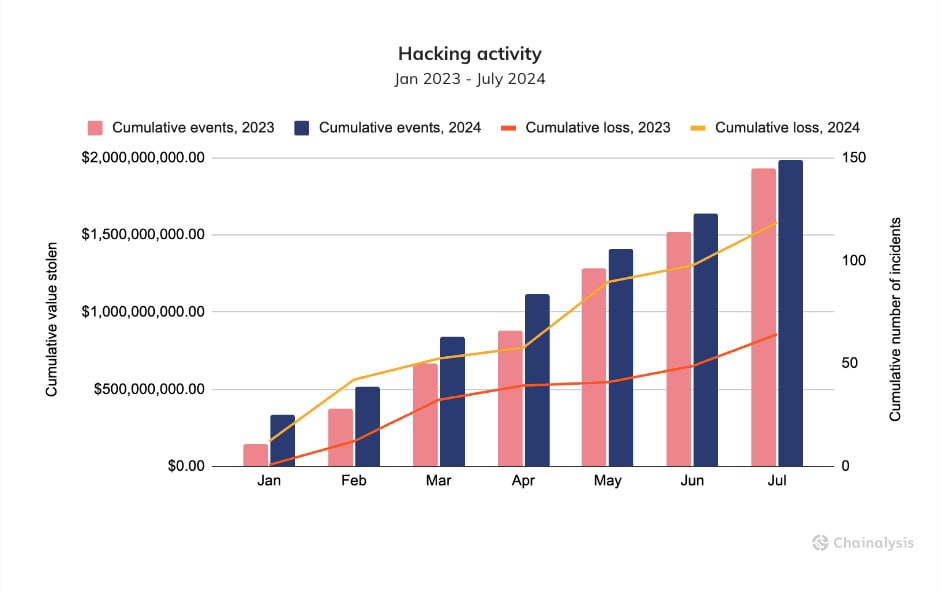According to Chainalysis, the amount of funds stolen by cybercriminals in the first six months of 2024 totaled $1.58 billion. This figure highlights the growing cyber threats in the cryptocurrency sector.
The average amount of cryptocurrency stolen in a single attack increased by nearly 80% — from $5.9 million to $10.6 million, based on the value of assets at the time of theft. This increase is partly due to the rising price of Bitcoin, which accounted for 40% of all theft-related transactions. Additionally, experts attribute this trend to more sophisticated attacks that target larger assets.
Notably, while cybercriminals previously focused on decentralized protocols, in recent months, they have shifted their attention back to centralized exchanges (CEX). This could be due to the higher security levels and enhanced protection measures of decentralized platforms, pushing attackers to seek less protected targets.
Experts also warn that cybercriminals are using increasingly sophisticated methods for hacking, including social engineering, exploiting vulnerabilities in smart contracts, and phishing attacks. In response, the industry is forced to strengthen security measures, implement new safety standards, and raise user awareness of potential threats.
The situation underscores the need for stronger regulation and international cooperation in combating cybercrime, as the damage from such attacks continues to grow, threatening the stability of the cryptocurrency market.










